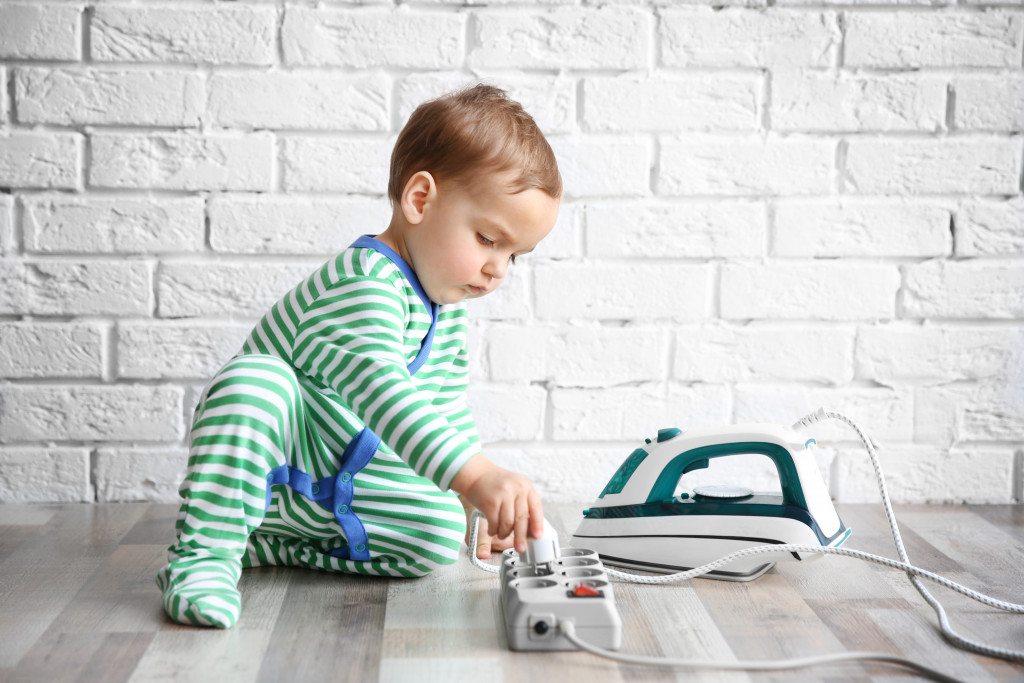Congratulations on your new arrival! Whether this is your first child or your fifth, you want to do everything you can to make sure your home is a safe haven for your little one. Below are some tips on how to baby-proof your home so you can rest easy knowing your child is safe.
1. Get down on your hands and knees.
This is the best way to see things from your baby’s point of view. Crawl around the house and look for anything that could be within reach that might pose a danger. This includes outlets, cords, breakable items, etc. You have to make sure that your child will not get shocked or cause anything to fall on them, like lamps, picture frames, and vases.
2. Use safety covers for outlets.
These are inexpensive and easy to find at any hardware store. They will prevent your child from sticking anything into an outlet and getting electrocuted. This is very important given that more than 30,000 shock incidents happen all over America every year.
3. Put away all breakable items.
This includes knick-knacks, vases, lampshades, etc. Anything that can be knocked over and broken should be stored out of reach or in a room that can be off-limits to your child. This is to make sure that your child doesn’t cause them to break and splinter into several sharp shards, which not only hurt but can also lead to infection.
4. Use cord shorteners or cordless window blinds.
Long cords can be a strangulation hazard, so it’s best to keep them out of reach or get rid of them altogether if possible. If you have blinds with long cords, you can buy cordless blinds or shorten the cords so they are not within reach. This also prevents them from pulling blinds down and causing blunt force trauma injuries.
5. Keep doors and windows closed and locked when not in use.
More than 8,000 fall injuries among young children are recorded yearly. By closing windows and doors closed, you can prevent your child from crawling out or falling out of an open window. You should also install locks on cabinets and drawers that contain potentially harmful items like cleaning supplies or medications.
6. Use less glass.
Glass is prone to breaking into hundreds of sharp shards, so it’s best to avoid using glass, especially on tables and cupboard doors. Kids can be strong enough to break them. However, you can also replace the glass fixtures and windows around the house if you don’t want to throw them away. Consult a contractor for residential glass replacement for estimates and service.

7. Choose furniture with rounded corners
Sharp edges and corners on furniture can be dangerous for children. They can hurt themselves if they fall or if they slam against the edge of a table or chair. Furniture with rounded edges and corners is less likely to cause injury, and hitting them is not as painful, too.
8. Keep chemicals out of easy reach
Chemicals can be extremely harmful to children if they are not stored and used safely. Many chemicals can cause burns, poisons, and even death if ingested. It is therefore important to keep all chemicals out of reach and locked away when not in use. If you must use chemicals, make sure to read the labels and instructions carefully and always follow the directions. Never leave chemicals unattended, especially around children. You should also consider using locks on cupboards and cabinets that contain harmful chemicals.
9. Treat allergens like harmful chemicals
Allergens are substances that can cause an allergic reaction in some people. This reaction can be mild, such as a rash, or it can be severe, such as anaphylaxis, which is a potentially life-threatening condition. Allergens can be found in food, cosmetics, medications, and even the environment.
The best way to avoid accidental ingestion of allergens is to read the labels of all products carefully. If you are not sure if a product contains allergens, you can contact the manufacturer for more information. You should also avoid using products that are not labeled properly.
If your child has an allergy, it is important to see a doctor for diagnosis and treatment. Some allergies can be treated with medication or with immunotherapy, which is a series of injections or shots that help the body to become less sensitive to the allergen. Similarly, always keep antihistamine and epinephrine in easily accessible locations in case an allergic reaction happens.
Final Thoughts
By following these simple tips, you can help make your home a safe haven for your little one. Take some time now to baby-proof your home so you can relax and enjoy this special time with your family worry-free!
